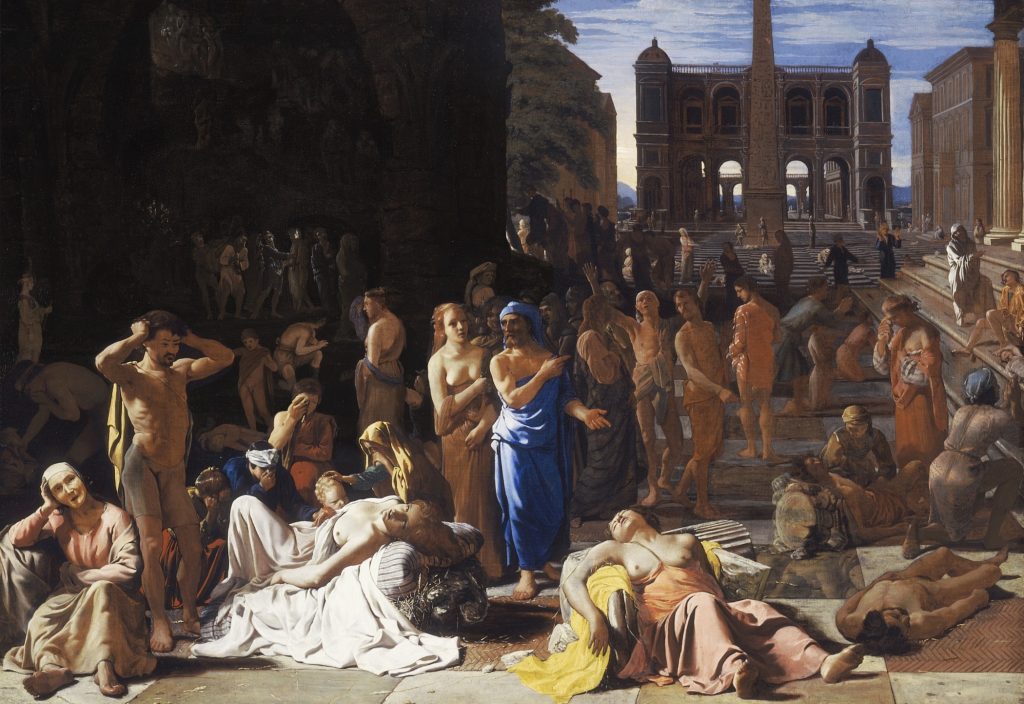Plague in an Ancient City
Tracey J. Kinney
The Classical World as Viewed from the 17th Century
It is believed that the Flemish painter Michael Sweerts lived through an outbreak of the plague while residing in Rome in the 1640s. His subsequent painting, “Plague in an Ancient City”, can therefore be seen to represent both contemporary concerns and historical themes. Art historians disagree as to whether or not the painting depicts a specific outbreak of the plague in the classical world, since many of Sweerts’ works are allegorical in nature. It is likely that this work too is as much a reflection on social and cultural values, as it is an attempt to capture accurately a specific moment in time.

Questions for Consideration
- What does this painting tell us about the perception of plague during the 17th century? What of the perception of the ancient world?
- Does this painting concur with accounts of disease discussed earlier in this chapter, or does it challenge them?
Media Attributions
- Plague in an Ancient City © Michael Sweerts is licensed under a Public Domain license

